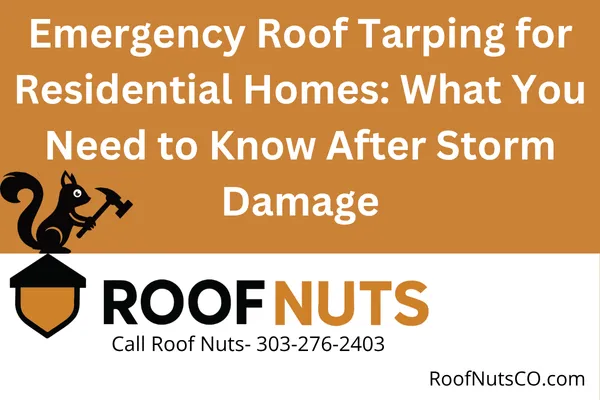
Emergency Roof Tarping for Residential Homes: What You Need to Know After Storm Damage
Emergency Roof Tarping for Residential Roofing: What You Need to Know
When storms hit hard, your roof takes the brunt of the damage. If high winds, hail, or falling debris have compromised your home’s roof, you may need emergency tarping to prevent further destruction until permanent repairs can be made.
Here’s what homeowners in Colorado and Georgia need to know.
What Is Emergency Roof Tarping?
Emergency tarping is a temporary fix designed to:
Cover damaged sections of your roof
Keep water and debris out
Prevent structural damage
Protect the interior of your home
Professional crews install heavy-duty waterproof tarps over compromised roof areas and secure them tightly with furring strips, sandbags, or nails, depending on the situation and roof type.
When Do You Need It?
You should consider emergency tarping:
Immediately after a severe storm with hail, wind, or heavy rain
If shingles, metal panels, or tiles are missing
When water is leaking into your attic or ceilings
If an insurance adjuster has recommended temporary protection
Fast action matters. According to both the International Residential Code and roofing industry best practices, moisture intrusion after storm damage can accelerate rot, mold, and insulation failure.
How Long Can a Roof Tarp Last?
High-quality tarps, when properly installed:
Last 30 to 90 days, depending on weather and materials
Are not a substitute for repairs
Must be inspected periodically to ensure they remain watertight
Insurance policies often require reasonable measures (like tarping) to mitigate further loss after a storm. Failing to tarp a damaged roof may delay your claim or reduce your coverage.
Why Call Roof Nuts?
We specialize in same-day emergency tarping across:
Colorado: Denver, Colorado Springs, Fort Collins, Pueblo, and more
📞 303-276-2403 | 🌐 RoofNutsCO.com
Our crews are trained to handle steep slopes, metal roofing systems, asphalt shingles, and more. We also document all tarp installs for insurance purposes.
FAQ
What size tarp do I need for my roof?
A tarp should cover the damaged area plus 3-4 feet of overlap on all sides. Let pros handle sizing and secure attachment for best protection.
Will my insurance pay for roof tarping?
Yes—most homeowners insurance policies cover emergency tarping if it’s needed to prevent further damage. Be sure to save receipts and take photos.
Can I tarp my own roof?
You can, but it’s risky and often dangerous, especially after a storm. It’s best to call certified professionals with safety gear and experience.
Need immediate help?
Call Roof Nuts for 24/7 emergency tarping and protect your home before the next storm hits.
📍 Serving Colorado
📞 Colorado: 303-276-2403
🌐 Visit RoofNutsCO.com
